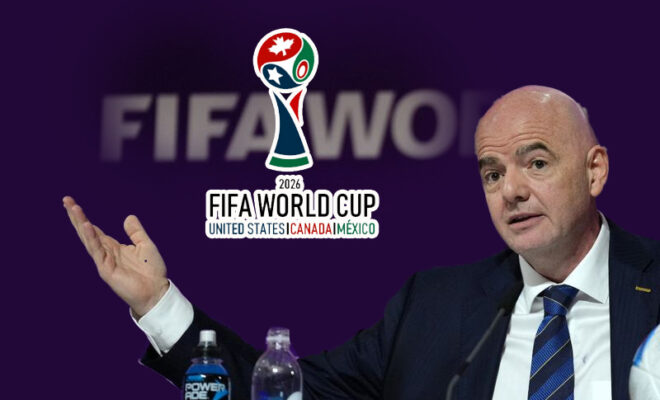What Is The New Format Of The FIFA World Cup 2026?

FIFA has announced a new format for the FIFA World Cup 2026. There will be 104 matches among 48 teams participating in the upcoming tournament.
FIFA has abandoned its disastrous plan for three-team groups and authorized a new model for the 2026 tournament—a 48-team extravaganza hosted by the United States, Canada, and Mexico—six years after initially promising to change the format of the men’s World Cup.
The new model, which includes four-team groups and a subsequent 32-team knockout stage, will be more in line with the conventional one.
The tournament will have 104 matches overall, an increase from 64, putting a heavier strain on the host cities and players. It will also be one week longer than ever before. Eight third-place teams will advance to the round of 32.
After months of deliberation and final agreement by its Council, a grouping of several of the most influential figures in soccer, FIFA, the game’s worldwide governing body, acknowledged the revisions on Tuesday.
The announcement signals the conclusion of a conflict between FIFA’s initial proposal and logic that lasted years. It is also the first of several keenly anticipated decisions regarding the specifics of the 2026 World Cup in North America.
With the size doubled, the new model is quite similar to the one formerly employed at 24-team competitions like the men’s and women’s Euros.
12 groups of four teams each will be selected from the 48 teams. They will each play a round robin of three games. Each group’s top two finishers progress.
The top eight of 12 teams will then complete the knockout stage, which will start with a round of 32 and progress as in the previous format.
The third-rank teams will then be ranked using points, goal differential, and other tiebreakers as necessary.
FIFA’s bank accounts will reap the greatest financial benefits from the new arrangement. The 2026 World Cup, even as an 80-game competition, would have obliterated all sorts of attendance and income records.
The additional 24 games will bring FIFA’s projected earnings for the following four years of $11 billion even closer—and most likely past it. (That’s an increase over the previous cycle’s record $7.5 billion.)
FIFA will administer the women’s and men’s World Cups for the first time in 2023 and 2026, whereas previously it would hand off many World Cup hosting duties — and, by consequence, some costs and earnings — to local organizing committees.
FIFA will consequently get the great majority of World Cup-related income and has stated that it will distribute the majority of those funds to its 211 member associations, who play soccer.
Also Read:- Women athletes inspiring all: The changing sports landscape in India



